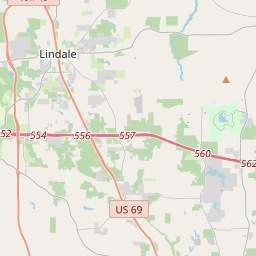Harris Creek Cemetery
Historical marker location:






Harris Creek Baptist Church organized in Oct. 1849, with 15 charter members and elder William H. Ray elected as pastor. Ray, who organized the First Baptist Church of Tyler the previous year, preached at Harris Creek for two years before resigning to form other Baptist churches in Smith County. The original location was along the creek at Lott’s Spring, near the Methodist Church camp ground east of this site. After severe flooding, members moved the church here, in the Mount Carmel community, in 1852. Anglo members and their African-American slaves worshiped together in one building while seated separately. The church building also served as a schoolhouse, and a cemetery began on adjacent land.
The earliest documented burial in Harris Creek Cemetery is of South Carolina native John Brownlee Clinkscales, who signed his will the same day he died on Jan. 4, 1857. Mount Carmel declined after the Civil War, and an extension of the Tyler Tap Railroad established the nearby town of Winona in 1876. Harris Creek Memorial Association formed in Oct. 1909, with James T. Kay of Winona as chairman. The association continues to hold an annual meeting, which usually includes worship service and a picnic dinner. Winona Baptist Church (formerly Harris Creek Baptist Church) deeded the cemetery to Harris Creek Memorial Association in 1948.
Tombstones made of marble, sandstone, concrete and metal chronicle several fraternal organizations and veterans of conflicts dating from the War of 1812 to Vietnam. The rural setting includes deciduous trees, some cedars, and native grass with some plantings. Many family plots are enclosed by concrete curbs, and some have iron fencing. Today, this burial ground of several hundred graves remains in use and recalls the contributions of citizens of Mount Carmel, Winona and other nearby communities
As one of the most visible programs of the Texas Historical Commission (THC), historical markers commemorate diverse topics in Texas history, including: the history and architecture of houses, commercial and public buildings, religious congregations, and military sites; events that changed the course of local and state history; and individuals who have made lasting contributions to the state, community organizations, and businesses.
Texas is home to the world's largest bat colony. The Bracken Bat Cave, near San Antonio, is home to millions of Mexican free-tailed bats.
During the turbulent times of the American Civil War, Smith County experienced significant unrest. Many residents in the county owned slaves, and tensions ran high between Union and Confederate sympathizers. The Battle of Blackjack Grove took place in August 1864, and although it was a minor skirmish, it reflected the deep divisions and struggles faced by the county during the war.
Following the war, Smith County experienced rapid growth and development. The arrival of the railroad in the late 19th century further boosted the county's economy and population. During this period, the town of Tyler established itself as a principal commercial center, attracting businesses and settlers from surrounding areas.
In the 20th century, Smith County continued to thrive with the growth of agriculture, oil, and manufacturing industries. Tyler became known as the "Rose Capital of the World" due to its substantial rose-growing industry. The county has also been a center for education, with the establishment of schools and universities.
Today, Smith County remains a vibrant and dynamic part of Texas. Its rich history, from its Native American roots to its role in the Civil War and beyond, provides a fascinating backdrop to its current achievements and endeavors.
Smith County Timeline
This timeline provides a concise overview of the key events in the history of Smith County, Texas.
- 1846 - Smith County is established by the Texas legislature.
- 1847 - The county seat is designated at Tyler.
- 1850 - The population of Smith County reaches 1,726.
- 1861-1865 - The Civil War impacts the county, with many residents serving in the Confederate Army.
- 1877 - The Texas and Pacific Railway reaches Tyler, boosting the local economy.
- 1930s - The Great Depression brings economic hardships to Smith County.
- 1932 - The East Texas Oil Field is discovered, leading to an oil boom in the area.
- 1950s - The construction of highways and infrastructure brings further growth and development to the county.
- 1995 - The Smith County Historical Society is formed to preserve the county's history.
- Present - Smith County continues to thrive as a regional economic and cultural hub in East Texas.